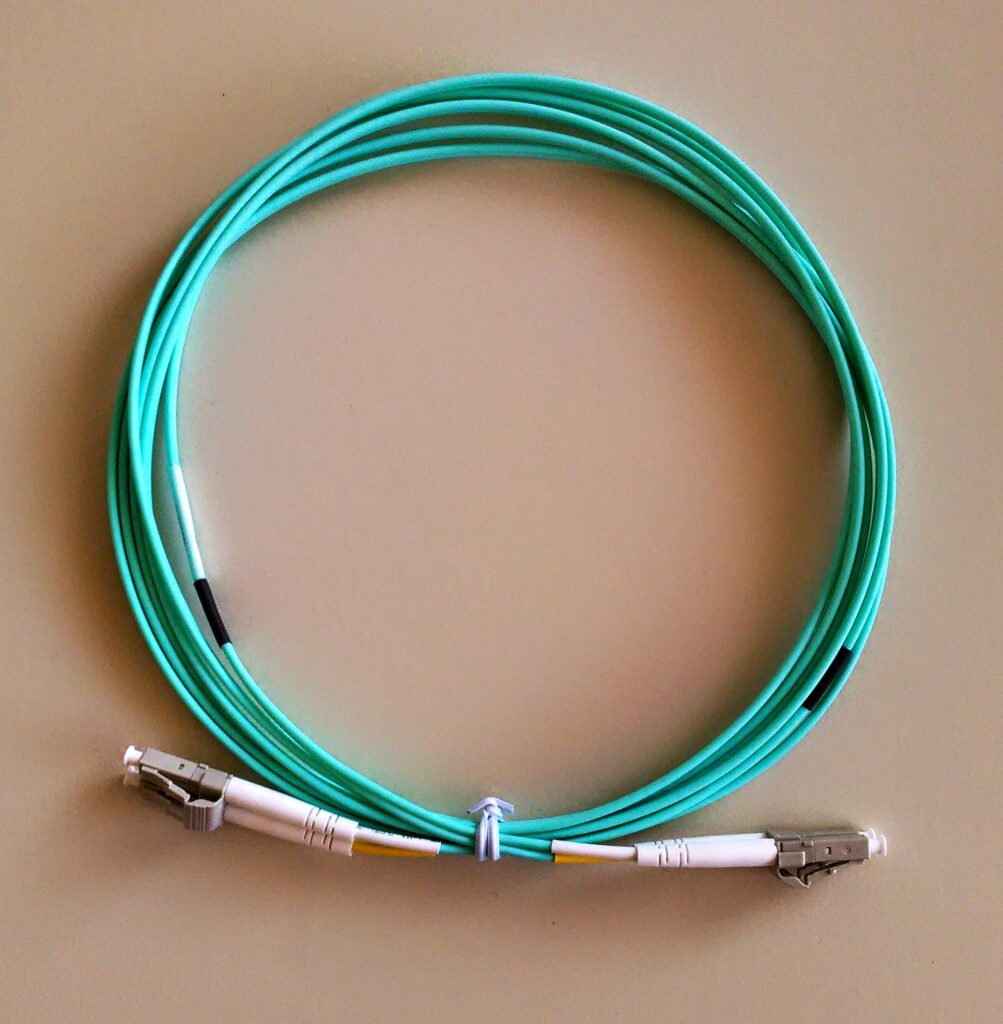
Multi Mode
Multi-mode fibre is a type of fibre optic cable that we commonly use in networking.
Fibre optic cables carry signals in the form of light. There are different methods to do this, called ‘modes’. Multi-mode fibre uses several different modes. As the light signal passes down the core, it bounces off the side walls.
There are different standards of multi-mode cable, called OM1 through to OM5. Each standard is an improvement on the last. OM1 fibre is 62.5 microns thick. The rest are only 50 microns. These days, we mostly use OM3 or better.
Multi-mode fibre is used over shorter distances. It can reach up to 1km, but at this distance, the maximum speed drops to 100Mbps. Generally, we should think of the limit as 550m, which can achieve 10Gbps.
Optical cabling connects to devices like switches and routers, using a transceiver. The transceiver is a module that is installed in the switch.
The transceiver needs to match the cabling type that you’re using. As an example, if you use multi-mode fibre, then you need a multi-mode transceiver.
Multi-mode is cheaper to use, not so much because of the cables themselves, but because of the cost of the transceivers.